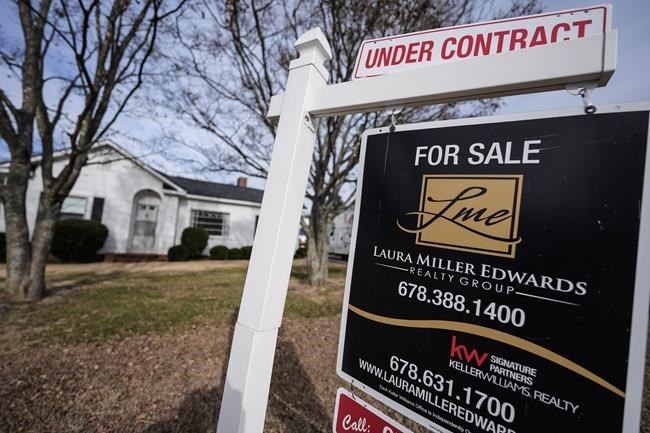LOS ANGELES (AP) — Sales of previously occupied U.S. homes sank in 2023 to a nearly 30-year low, as sharply higher mortgage rates, rising prices and a persistently low level of homes on the market combined to push homeownership out of reach for many Americans.
The National Association of Realtors said Friday that existing U.S. home sales totaled 4.09 million last year, an 18.7% decline from 2022. That is the weakest year for home sales since 1995 and the biggest annual decline since 2007, the start of the housing slump of the late 2000s.
The median national home price for all of last year edged up just under 1% to record high $389,800, the NAR said.
Last year’s home sales slump echoes the nearly 18% annual decline in 2022, when mortgage rates began rising, eventually more than doubling by the end of the year. That trend continued in 2023, driving the average rate on a 30-year mortgage by late October to 7.79%, the highest level since late 2000.
The sharply higher home loan borrowing costs limited home hunters' buying power on top of years of soaring prices. A dearth of homes for sale also kept many would-be homebuyers and sellers on the sidelines.
Still, a pullback in mortgage rates since late last year, and forecasts calling for a further rate declines this year, is fueling hopes that home sales will begin to bounce back from their dismal showing in 2023.
“The latest month’s sales look to be the bottom before inevitably turning higher in the new year,” said Lawrence Yun, the NAR's chief economist. ”Mortgage rates are meaningfully lower compared to just two months ago, and more inventory is expected to appear on the market in upcoming months.”
Mortgage rates have been mostly easing since November, echoing a pullback in the 10-year Treasury yield, which lenders use as a guide to pricing loans. The yield has largely come down on hopes that inflation has cooled enough for the Federal Reserve to shift to cutting interest rates this year.
The average rate on a 30-year home loan was 6.6% this week, according to mortgage buyer Freddie Mac. If rates continue to ease, as many economists expect, that should help boost demand heading into the spring homebuying season, which traditionally begins in late February.
Still, the average rate remains sharply higher than just two years ago, when it was 3.56%. That large gap between rates now and then has helped limit the number of previously occupied homes on the market by discouraging homeowners who locked in rock-bottom rates from selling.
“Prospective homebuyers have been shut out of the market by a lack of inventory,” said Lisa Sturtevant, chief economist at Bright MLS. “If there had been more listings on the market in 2023, we would have had more home sales.”
At the end of December, there were just 1 million homes on the market, the NAR said. While that's a 4.2% increase from a year earlier, the number of available homes remains well below the monthly historical average of about 2.25 million.
The available inventory at the end of last month amounts to a 3.2-month supply, going by the current sales pace. That’s down 3.5% from the previous month, but up from 2.9% from December 2022. In a more balanced market between buyers and sellers, there is a 4- to 6-month supply.
That means homebuyers are likely to face intense competition for the relatively few homes on the market, which should keep pushing up prices.
"There will still be a demand-supply imbalance in the housing market well into 2024,” Sturtevant said.
Despite easing mortgage rates, home sales in December declined after rising the previous month. Existing home sales fell 1% from November to a seasonally adjusted annual rate of 3.78 million, the slowest sales pace since August 2010, the NAR said.
Sales fell 6.2% from a year earlier. Last month’s sales pace is short of the roughly 3.83 million that economists were expecting, according to FactSet.
Home prices rose for the sixth straight month in December. The national median home sales price rose 4.4% from a year earlier to $382,600, the NAR said.
Homebuyers continued to face a competitive market due to the shortage of homes for sale.
Homes sold last month typically within just 29 days after hitting the market, and 56% of properties that sold in December were on the market for less than a month, the NAR said.
First-time homebuyers who don’t have any home equity to put toward their down payment continued to have a tough time getting into the housing market. They accounted for just 29% of all homes sold last month, down from 31% in November and December 2022. They've accounted for 40% of sales historically.
“Renters, potential first-time buyers (are) really struggling to get into the market,” Yun said.
Alex Veiga, The Associated Press

